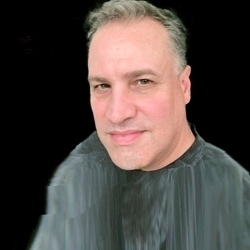Sometimes, even the largest consumer product companies struggle when their brands hit a snag.
Since 1999, Procter & Gamble has given its No. 1 beauty brand, Pantene, three major brand refreshes. Over the past two years, the company did it again---this time, with the help of 17 doctors from around the world working in the fields of space and medical research. When researching a problem, finding solutions and innovating are in order. So, why not ask the scientific community for help?
A recent Bloomberg BusinessWeek article pointed to the problems that can develop over time, even for a $3 billion-dollar brand like Pantene. Increased competition from myriad new brands, the explosion of cheaper private label alternatives and retailers’ downsizing of over-assorted shelves have all come together to create the perfect storm.
The combination of these factors creates significant pressure on even high-volume, blockbuster brands, such as Pantene. Oh, and what about product proliferation? One industry analyst was quoted thus in the BusinessWeek article: “You’d go to CVS or Wal-Mart and the whole shelf would be Pantene. They added more and more products that confused the consumer.” Didn’t we discuss this in one of my recent posts?
The upshot of two years worth of research led to several important results:
• A SKU reduction by almost 1/3 of the Pantene brand.
• A reorganization of the brand into four specific hair types: color-treated, curly, fine and medium-to-thick—with products color-coded accordingly to make shopping more convenient for the customer.
• A healthy dose of innovation to create a new generation of hair-care products based on scientific research. As a result, reformulated Pantene products include 13 substances, including polymers, that P&G has never used before.
• Regardless of the revamp, prices will hold steady as the relaunched line begins to hit store shelves at about $4 per unit (likely a good idea given the economy and competition).
According to the article, “Computer modeling allows P&G to predict the performance of millions of shampoo and conditioner prototypes without having to develop them. Still, 600 formulas were tested on more than 20,000 women worldwide.” There’s something to be said for user experience, no matter how sophisticated our science is.
Modern scientific research and technology should be applied to help companies innovate. Other than that, all of these other points are nothing more than good old-fashioned marketing sense. Every brand, even Pantene, needs an overhaul from time to time. Unfortunately, that sometimes doesn’t happen unless sales start slipping.
That being said, I applaud P&G for taking the bull by the horns, rolling up their sleeves and taking their time to execute a yeoman-like, analytical repositioning of its Pantene brand. The steps they’ve taken will likely re-energize the brand and generate stronger sales again.
Questions:
• Are you a loyal Pantene user or have you switched to other brands, including store brands, to save money?
• Have you ever been confused by the sheer number of Pantene products or do you like having a lot of choices?
• Are you more likely to try or go back to Pantene now that the line has innovated?
I’d love to hear from you.
Did you like this article?
Know someone who would enjoy it too? Share with your friends, free of charge, no sign up required! Simply share this link, and they will get instant access…
Know someone who would enjoy it too? Share with your friends, free of charge, no sign up required! Simply share this link, and they will get instant access…
Marketing Strategy Articles
You may like these other MarketingProfs articles related to Marketing Strategy:
- Creating Compelling Experiences With Data + AI for B2B Consumers: Salesforce's Neha Shah & Ruth Bolster
- What Is Affiliate Marketing? [Infographic]
- The Saturated Marketing Tech Landscape: The Case for Consolidation
- Martech 2024: Three Trend Predictions
- Navigating the Marketing AI Landscape of 2024: Four Trends
- How to Gain Managerial Approval for Your Go-to-Market Strategy




